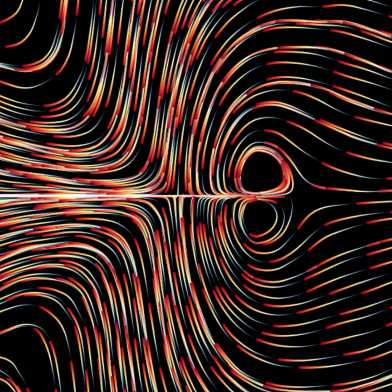2024
Engineering Living Materials: materials with new properties and functions

"Living materials" could contribute to future building materials with their ability to sense and react to environmental changes, capture CO2, or self-repair. The field is still in its infancy, but at the Dept. of Civil, Environmental, and Geomatic Engineering three research groups are exploring the potential of living materials. They combine living cells with conventional materials to develop living materials with innovative properties. An inside look at the ETH ALIVE initiative.
Understanding fractures: from microstructures to earthquakes

David Kammer’s research focuses on a rather unpopular phenomenon: fracture. He uses computer simulations and laboratory experiments to study fractures at all sizes – from nanoscale phenomena in collagen fibres all the way to tectonic processes in earthquakes. He is particularly interested in minimal changes that can have large effects on the properties of a material.
Building Resilience: A Conversation with Božidar Stojadinović

Strong seismic events are rare but can threaten entire cities, making resilience a key research area for Professor Božidar Stojadinović. While seismic analysis and design focus on individual buildings, evaluating whole building portfolios ensures safety efforts are well-directed. Recently, Božidar Stojadinović discussed his life and work with Dr. Roland Bärtschi and Ravina Sriram of Baertschi Partner Bauingenieure AG, exploring both research and practical aspects of the field.
The view from space – and what it tells us

Earth-observation satellites deliver data for a wealth of applications – from monitoring climate change and documenting war crimes to planning disaster relief and assessing snow depth. ETH researchers from the Department of Civil, Environmental and Geomatic Engineering are also big beneficiaries.
Biodiversity loss due to agricultural trade three times higher than thought

Exporting agricultural products from tropical regions to China, the USA, the Middle East, and Europe is three times more harmful to biodiversity than previously assumed. Researchers from the Technical University of Munich (TUM) and ETH Zurich have shown this by tracking how agricultural exports from 1995 to 2022 affected land use changes in the producing countries. Brazil, Indonesia, Mexico, and Madagascar are particularly affected by species loss.
HIPERWIND reduces offshore wind energy costs by up to 9 percent

The EU wants to increase offshore wind energy capacity from the current 12 gigawatts (GW) to 450 GW by 2050. To help achieve this goal, the international research initiative HIPERWIND has developed innovative simulation models that reduce the levelized cost of energy for wind turbines by up to 9 percent. From ETH Zurich, the Chair of Risk, Safety and Uncertainty Quantification at the Department of Civil, Environmental and Geomatic Engineering contributed to the project.
Sustainability rankings for universities: what can we learn from them?

ETH Zurich's sustainability efforts were evaluated twice last month: the “WWF University Rating 2024” and the “QS World University Rankings: Sustainability 2025” show a mixed picture. An analysis.
A thinner thermal insulation for buildings

ETH spin-off Aeroskin Tech is developing innovative thermal insulation that uses aerogel technology to insulate buildings more efficiently and more sustainably. This new insulation has an energy-saving effect and is significantly thinner than conventional materials – a mere 10 centimetres instead of up to 30 centimetres, depending on the application.
Timber, earth and a digital ecosystem for sustainable construction

Two flagship projects from Innosuisse have been launched at the Department of Civil, Environmental and Geomatic Engineering at ETH Zurich with the aim of transforming the Swiss construction industry in a sustainable way: While "Swircular" lays the foundation for a circular construction industry, "Think Earth" enables regenerative construction with timber and earth.
Her city’s digital twin

Grace Kagho set up UrbanEcho to create the basis for sustainable urban planning in low-income countries. Her goal: a detailed digital twin of cities and their residents.